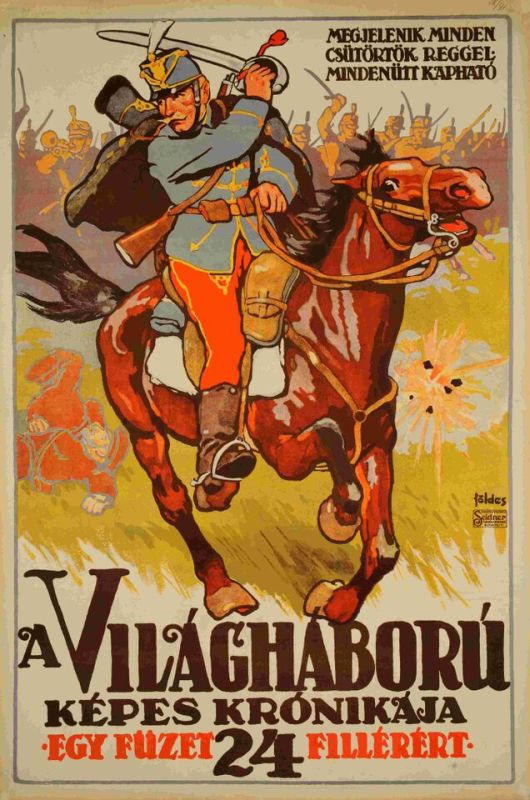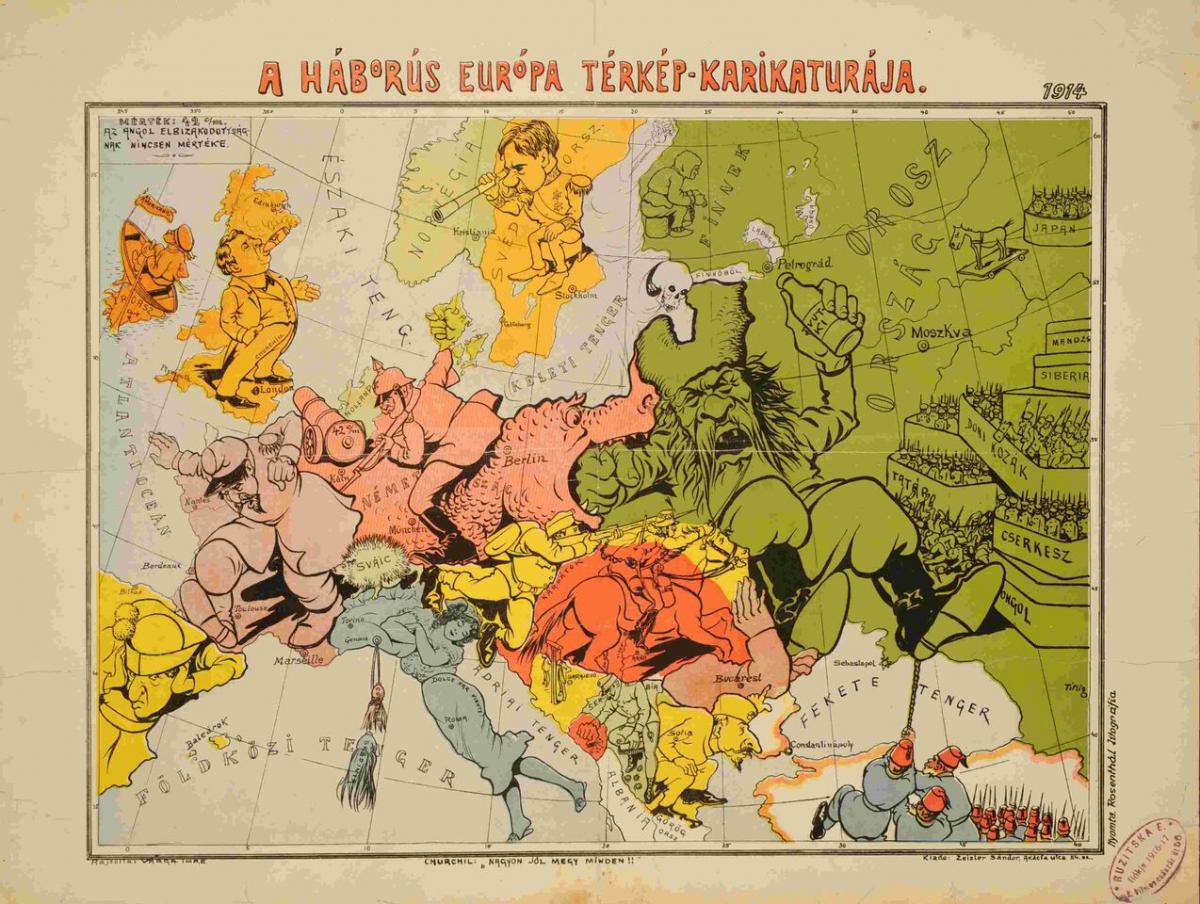
Propaganda in World War I – exhibition
“Bloody” 20th century started with World War I in the history of Europe. At the same time, it was an event of world history in which central role was played by propaganda. Total war required support from the general public, so each and every country taking part in the war was keen on maintaining the patriotic and militant enthusiasm of its people. As Harold D. Lasswell, a political scientist making research in this phenomenon after the war put it: “International war propaganda has grown to amazing dimensions in the latest war because total warfare made it necessary to mobilize civil consciousness as well. No government could hope for victory without the support of a united nation, and no government could have a united nation without controlling people’s thinking.”(Harold D. Lasswell: Propaganda technique in the World War. New York, Peter Smith, 1938.)
 Our exhibition wishes to draw attention to this radically new phenomenon, by way of drawing a nature study and development scheme of propaganda in World War I Hungary. First of all, we try and find an answer to the questions how propaganda worked in the Hungarian half of the Austro-Hungarian Monarchy and what kind of techniques and media were used to maintain militant enthusiasm in Hungary some 100 years ago. National Széchényi Library owns unique collections to illustrate this: on the one hand, it keeps a so-called World War I collection and, on the other hand, the national library has the richest collection of Hungarian graphic posters in Hungary. All this is made complete with a rich collection of objects, and on top of that, fascinating interactive visual elements and museum pedagogical sessions let today’s visitors get acquainted with the events of the hinterland of wartime Hungary. At the same time, the exhibition also presents the process leading from total militant and patriotic enthusiasm to utter disillusionment.
Our exhibition wishes to draw attention to this radically new phenomenon, by way of drawing a nature study and development scheme of propaganda in World War I Hungary. First of all, we try and find an answer to the questions how propaganda worked in the Hungarian half of the Austro-Hungarian Monarchy and what kind of techniques and media were used to maintain militant enthusiasm in Hungary some 100 years ago. National Széchényi Library owns unique collections to illustrate this: on the one hand, it keeps a so-called World War I collection and, on the other hand, the national library has the richest collection of Hungarian graphic posters in Hungary. All this is made complete with a rich collection of objects, and on top of that, fascinating interactive visual elements and museum pedagogical sessions let today’s visitors get acquainted with the events of the hinterland of wartime Hungary. At the same time, the exhibition also presents the process leading from total militant and patriotic enthusiasm to utter disillusionment.
How did propaganda, appearing in a variety of forms, affect people’s everyday life? What kind of image did period media provide of war, and did it have any resemblance to the reality of battlegrounds? Was there anyone at all who dared to disagree with propaganda slogans?
The project has been realized by a work group, with the instruction of NSZL’s Directorate of Research and Academic Affairs. Curators of the exhibition were historian Iván Bertényi, Jr., art historian Anikó Katona and historian Zoltán Oszkár Szőts.
 Gifts and thematic volumes related to the exhibition are available at the souvenir shop next to the main entrance of the Library.
Gifts and thematic volumes related to the exhibition are available at the souvenir shop next to the main entrance of the Library.
Museum pedagogical sessions are recommended primarily to organized groups of secondary school students; propaganda media, original resources and objects of World War I can be studied by the students who can revive their previously obtained knowledge on the subject.
Fee of the sessions: HUF 400 per person, length of the session: 80 minutes. Appointment is required at the following e-mail address: csoportvezetes@oszk.hu. For adult visitors, guided group tours can be organized, provided they notify us at the above e-mail address.
The exhibition will be open from October 17, 2015 to March 20, 2016, Tuesday to Saturday, during the opening hours of the Library, i.e. between 10 a.m. and 7 p.m. The latest time you can enter is 1 hour before closure. Entrance fee is HUF 800 for individual visitors, while group visitors are charged HUF 400 per person.
Venue: National Széchényi Library, Buda Castle, Building “F”, Floors 5 and 6





